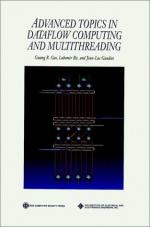|
This section contains 400 words (approx. 2 pages at 300 words per page) |
There are several interpretations and definitions of the term dataflow (or sometimes also commonly spelled as the two words "data flow"), such as:
(1) Dataflow is the path or general movement of data through a computer system, from a source document to data entry, to (data) processing, and finally to its ultimate destination (with some type of review and/or analysis). Data are distinct pieces of information that are processed within a computer system, and are usually formatted in a particular way in order to serve a special purpose. Data can exist in such forms as numbers, text, sounds, and images in a computer program, but all forms of data are ultimately represented as bits (the smallest units of binary information represented uniquely by either zero (0) or one (1)) stored inside a computer. Data can change format and sequence as it "flows" from program to program. Dataflow can be described, for example, as the route taken by data when a program is executed and data "flows" from random access memory (RAM) through an interface unit of wires called the bus, which transfers the data to the central processing unit (CPU) and eventually back to the RAM. A processing unit called the "instruction decoder," which interprets and implements software instructions, converts (i.e., "decodes") the data. From the instruction decoder the data passes to the arithmetic and logic unit (ALU), which performs calculations and comparisons. Data may be stored by the ALU in temporary memory locations called registers where it may be easily retrieved. The ALU performs specific operations such as addition, subtraction, multiplication, and conditional tests on the data in its registers, sending the resulting data back to RAM or storing it in another register for further use. During this process, a unit called the "program counter" keeps track of each successive instruction to make sure that program instructions within the CPU are followed in the correct order. Dataflow is often described within a dataflow diagram, which describes the data and processing that is performed on it.
(2) Dataflow is a technique for specifying parallel computations, usually in the shape of two dimensional graphs in which available instructions for concurrent execution are written side by side, while those that must be executed in sequence are written one below the other. Dataflow involves "data-driven" architecture. In data-driven architecture dataflow involves a technique where calculations are made when all necessary data is available.
|
This section contains 400 words (approx. 2 pages at 300 words per page) |


